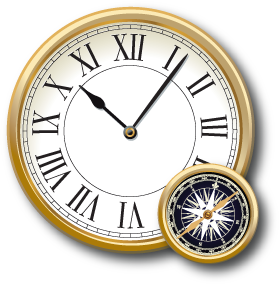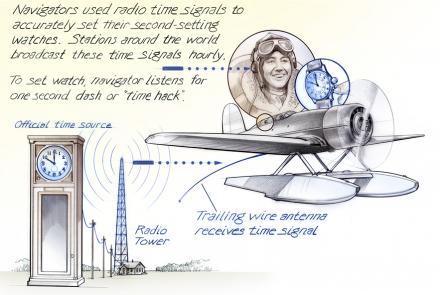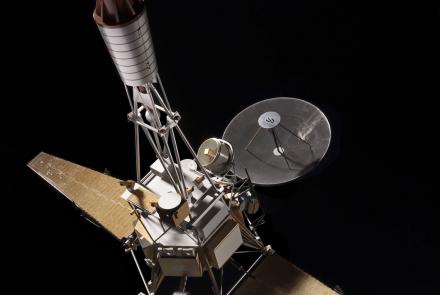Multimedia Gallery
Beginning in 1961, NASA used this quartz oscillator as the main timing and radio frequency standard at the Goldstone tracking station.
Quartz oscillator used to control radio frequency on Transit satellites.
Set in an electrical circuit, a crystal resonator vibrates regularly and becomes an oscillator to control radio frequencies.
Aircraft equipment locates signals from a ground station. Typically, a needle points toward a station, giving a bearing relative to the direction the aircraft is headed.
Radio navigation relies on the transmission and reception of electromagnetic signals to determine position or course.
Antennas create four “beams” that aviators locate by listening to audio signals. When the signals overlap into a constant tone, the aviator is “flying the beam.”
Navigators used radio time signals to accurately set their second-setting watches. Stations around the world broadcast these time signals hourly.
NASA planned to place the Ranger 1 satellite into an elliptical orbit around Earth, but it never reaching its intended orbit.
Ranger 3 lunar probe, launched January 26, 1962.














